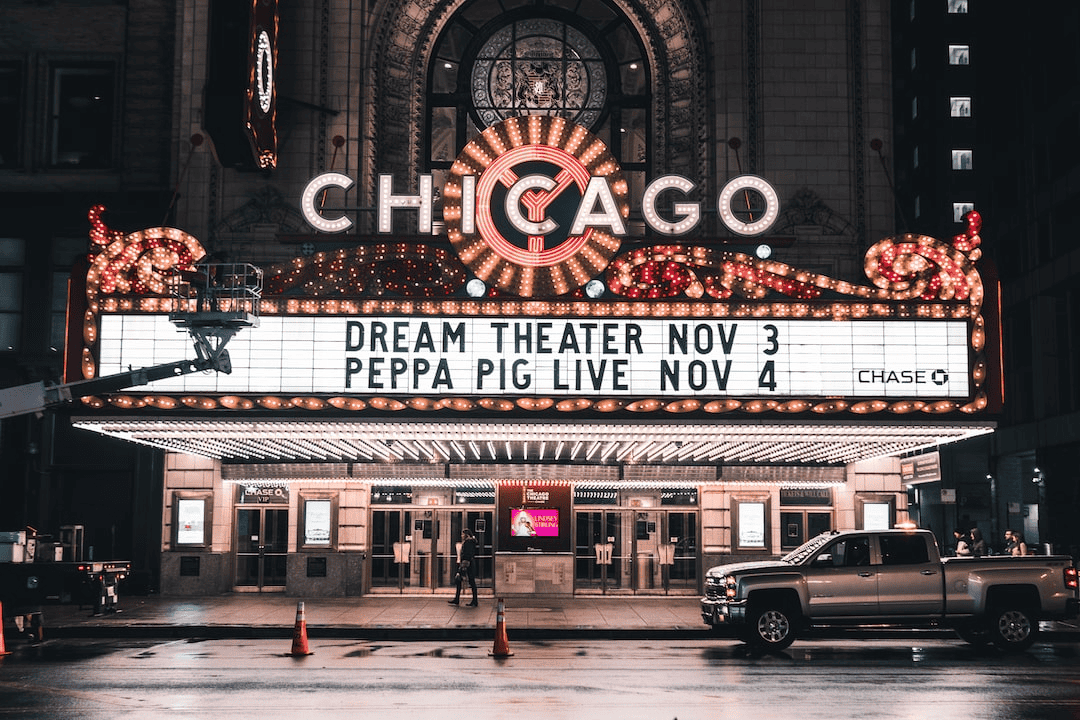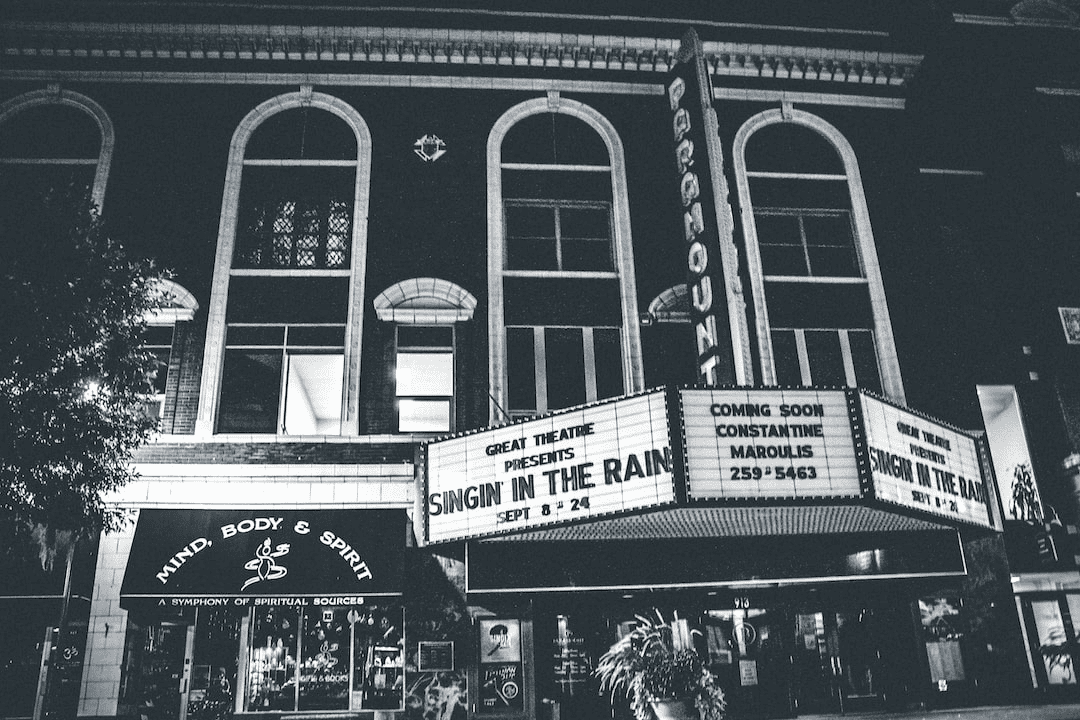The movie industry these days is one of the biggest industries in the world. However, they’ve become too safe to a point where they’ve almost become stale. This is especially true for comedy movies like “Some Like It Hot” (1959), starring Marilyn Monroe or or The Flintstones – they just don’t make them as they used to.
Oh and let’s not mention how everything these days is either a remake, remaster, or a re-imagining.
If you feel the same as I do, I have some good news for you – tons of movies from the golden era of Hollywood that still hold water. Sure, they might be a bit more crass than what we get these days, but they have more soul than anything produced in the last decade.
You probably seen my classic tv shows list however, in this article, I will go over all the classic comedy films from the 50’s and try to rekindle your passion for watching comedy!
Key Takeaway
- The 1950s was considered the Golden Era of comedy and horror films in Hollywood, with stars like Marilyn Monroe, Tony Curtis, and Jack Lemmon leading the genre.
- Several subgenres thrived during this time, including screwball comedies, romantic comedies, and satires. Memorable films like “Roman Holiday,” “Sabrina,” and “Dr. Strangelove” came out of this decade.
- Classic comedy teams like Laurel and Hardy, The Marx Brothers, and Abbott and Costello were very popular and influenced many comedians that followed. Their unique blends of slapstick and wordplay have stood the test of time.
- These classic 1950s comedies shaped the industry during its peak. With sharp wit, charismatic stars, talented filmmakers and cultural relevance, these movies left an enduring legacy that still entertains audiences today.
Golden Era of Comedy Stars

In the 50s, Hollywood was still riding high from its golden age. In fact, some of the best Hollywood movies were made in the 50s. Vertigo, Ben Hur, Sunset Boulevard, and the Seven Samurai are just a few that come to mind when I think about that era.
But those were dramas and early action films. What about the comedy movies of the 1950s? Well, it was just as prolific.
You had movie stars such as Marilyn Monroe, Tony Curtis, Bob Hope, Elisabeth Taylor, Cary Grant, and Jack Lemmon absolutely dominate the funny side of the silver screen.
The movie star that made this decade with her captivating personality traits was Marilyn Monroe. She was the lead actress in movies almost everyone remembers fondly, including Gentlemen Prefer Blondes, How To Marry A Millionaire, and of course, Some Like It Hot.
Of course, other movie stars shaped the comedy landscape of that decade. You also had Jack Lemmon, Judy Garland, Audrey Hepburn, William Wyler, and many others.
I could go on and on about the movie stars of the 50s and how they influenced the comedy genre, but I have to move on.
With this little intro out of the way, let’s take a look at all the best 1950s comedy movies.
Top Classic Comedies of the 1950s
The comedy genre really evolved and expanded over the years. These days the movie landscape is chock full of all kinds of subgenres – from action and stoner comedies to sex comedy.
Things were a bit more tame and crass back in the day, we wouldn’t enjoy some of the movies we have today (looking at you Tim Burton).
So, to make things a bit more concise, I’ve split this list into five sub-categories: Academy Award-winning comedies, screwball comedies, yer’ good-ol romantic comedies, and satires.
So, let’s start with Academy Award winners and move on from there.
Academy Award Winning Comedies
Tons of comedies from the 1950s got nominated for the prestigious Academy Award, but only a few managed to actually snag it.
These comedies are a must-watch if you want to call yourself a film file. So without further ado, let’s go in-depth on some of the best comedies of all time.
Roman Holiday (1958)
Directed by William Wyler, Roman Holiday won the Oscar for Best Screenplay and stars two silver screen legends – Audrey Hepburn and Gregory Peck.
The story revolves around a young European princess named Ann (played by Hepburn) who, during a tour of European capitals, becomes overwhelmed by her tightly scheduled and highly publicized life.
One night in Rome, she decides to escape from her entourage and experience the city in anonymity.
During her adventure, Princess Ann meets Joe Bradley (played by Peck), an American reporter who doesn’t initially recognize her.
He realizes her true identity but decides to keep it a secret, hoping to get an exclusive story and photographs for his newspaper. They develop a romantic connection as they spend the day together exploring Rome.
The movie is famous for its charming story, witty humor, and impeccable performances of Hepburn and Peck.
The movie didn’t just win the Best Screenplay Award; it also won Aubrey the Best Actress Academy Award.
Around The World In 80 Days (1956)
Around The World In 80 Days is an Oscar-winning adventure comedy movie directed by Michael Anderson and starring David Niven and Cantinflas. The movie is loosely based on Verne’s classic novel, which has the same title.
The movie opens in London in the late 19th century, where the eccentric and wealthy Englishman Phileas Fogg (played by David Niven) makes a wager with fellow members of the Reform Club.
Fogg bets half his fortune that he can travel around the world in 80 days, a feat thought impossible at the time. He embarks on the journey accompanied by his loyal French servant Passepartout (played by Cantinflas).
As Fogg and Passepartout travel across different countries and encounter numerous challenges and comical adventures, they are pursued by Detective Inspector Fix (played by Robert Newton), who believes Fogg to be a bank robber.
The journey takes them through places like Paris, Spain, India, Hong Kong, and the United States, just to name a few.
The film is known for its epic scale, star-studded cast, and numerous cameo appearances. It features a series of humorous and thrilling incidents as Fogg and Passepartout attempt to overcome obstacles and complete their journey within the stipulated time.
The film won several Academy Awards, including Best Picture, and is remembered as a classic adventure comedy with a globetrotting theme.
Gigi (1958)
Directed by Vincente Minnelli, Gigi is a musical comedy. The movie is based on a 1944 novella of the same name written by a French writer named Colette. The movie stars Leslie Caron, Maurice Chevalier, and Louis Jourdan, among many others.
This feature film is set in turn-of-the-century Paris and tells the story of a young girl’s transformation from a carefree teenager into a sophisticated woman.
The movie revolves around Gigi (played by Leslie Caron), a free-spirited, tomboyish young girl living in Paris.
Her grandmother and aunt are grooming her to follow the family tradition of becoming a courtesan, a high-society woman who entertains and provides companionship to wealthy men.
However, Gigi’s life turns when she catches the eye of Gaston Lachaille (played by Louis Jourdan), a wealthy and charming bachelor. Gaston, who has a reputation as a playboy, finds himself drawn to Gigi’s innocence and charm.
As their relationship develops, Gigi is faced with the choice of whether to follow the path set by her family or pursue true love.
Gigi explores themes of love, societal expectations, and the changing roles of women in a pretty lighthearted musical manner. This movie saw massive critical and commercial success.
It won 9 Oscars, including the Academy Award for best picture.
Screwball Comedies
Although screwball comedies peaked in the 1940s, a couple of memorable movies of this genre were made in the 50s.
If you didn’t know, screwball comedies are known for fast-paced, witty dialogue, often involving a battle of the sexes or role reversals between the main characters.
The term “screwball” itself suggests a sense of eccentricity and unpredictability.
His Girl Friday (1940)
His Girl Friday is a quintessential screwball comedy directed by Howard Hawks and first released in 1940. The movie is based on the theater play “The Front Page” by Ben Hecht and Charles MacArthur.
However, the movie produces a critical twist – the gender of one of the main characters is changed, turning Hildy Johnson into a woman, played by Rosalind Russell.
The film stars Cary Grant as Walter Burns and Rosalind Russell as Hildy Johnson.
The story revolves around Hildy Johnson, a talented newspaper reporter on the verge of leaving her job to marry an insurance salesman, Bruce Baldwin (played by Ralph Bellamy).
However, her editor and ex-husband, Walter Burns, is determined to win her back professionally and personally. Walter convinces Hildy to cover one last story – the impending execution of a man convicted of murder.
As Hildy becomes involved in the case, she quickly becomes entangled in a whirlwind of chaos, intrigue, and rapid-fire dialogue. The film captures the fast-paced and frenetic atmosphere of the newspaper world as reporters race against time to get the latest scoop.
The plot takes unexpected twists and turns, with humor arising from the witty banter between the characters and the frenzied nature of the newsroom.
This timeless classic is celebrated for impeccably sharp writing, charismatic performances, and for shaping the whole screwball comedy genre.
Monkey Business (1952)
Monkey Business is another must-watch screwball comedy. It was directed by Howard Hawks and starred Marilyn Monroe, Cary Grant, Ginger Rogers, and Charles Coburn.
This movie is famous for its zany and chaotic humor.
The story opens with Dr. Barnaby Fulton (played by Cary Grant), a mild-mannered and absent-minded chemist who is working on a formula to restore youth and vitality.
While trying to perfect his youth serum, he accidentally combines his formula with water from the office cooler.
Unbeknownst to him, the water is contaminated by a mischievous laboratory chimpanzee named Esther.
Upon drinking the fountain of youth concoction, Barnaby and his wife Edwina (played by Ginger Rogers) start exhibiting increasingly erratic behavior, reverting to a more youthful and carefree state.
The effects of the formula lead to a series of comic misadventures as the Fultons navigate the challenges of their rejuvenated selves.
As chaos ensues, Barnaby finds himself pursued by his attractive secretary, Lois Laurel (played by Marilyn Monroe), who becomes infatuated with him in his rejuvenated state. Meanwhile, Edwina attracts the attention of a wealthy and influential industrialist, Mr. Oxley (played by Charles Coburn).
Thanks to Grant’s impeccable comedic timing, this movie is a must-watch!
Romantic Comedies
There’s nothing like snuggling with your significant other on a cold winter’s eve and watching a good-ol’ rom-com. If you’ve already watched all modern romantic comedies, why not check out some classic films?
Sabrina (1954)
Directed by Billy Wilder and featuring an all-star cast of Audrey Hepburn, Humphrey Bogart, and William Holden – this enduring comedy is set in the world of wealthy Manhattan socialites.
The movie revolves around Sabrina Fairchild (played by Audrey Hepburn), the chauffeur’s daughter on the Larrabee estate. She has a longstanding crush on David Larrabee (played by William Holden), the younger, carefree son of the wealthy Larrabee family.
Sabrina is sent to Paris to study cooking after an unsuccessful suicide attempt, where she transforms into a sophisticated and elegant woman.
Upon her return to New York, Sabrina captures the attention of both David and his older, more serious brother Linus Larrabee (played by Humphrey Bogart).
Linus, the responsible and business-minded brother, initially views Sabrina as a distraction to David, who is engaged to a wealthy heiress. However, as Linus spends more time with Sabrina, he finds himself unexpectedly falling in love with her.
Sabrina received critical acclaim and was nominated for several Academy Awards. Audrey Hepburn’s portrayal of Sabrina, Wilder’s direction and the chemistry between the lead actors, make this movie a must-watch if you’re into romantic comedies.
Pillow Talk (1958)
Directed by Michael Gordon and starring Rock Hudson, Doris Day, and Tony Randal – Pillow Talk is famous for its witty humor, charming performances, and superb chemistry between the lead actors.
The movie revolves around Jan Morrow (played by Doris Day), an interior decorator, and Brad Allen (played by Rock Hudson), a songwriter. They share a telephone party line, and Jan becomes increasingly frustrated by Brad’s lengthy and frequent calls to his many romantic interests.
The two have never met in person, but Jan develops a strong dislike for Brad based on their telephone interactions.
When Brad discovers Jan’s disdain for him, he meets her in person under the alias “Rex Stetson.” Pretending to be a shy Texan, Brad pursues a romantic relationship with Jan, who is unaware of his true identity.
Complications arise as the characters navigate their tangled web of deceit and mistaken identities.
Adding to the mix is Jonathan Forbes (played by Tony Randall), Jan’s friend and suitor, who also becomes romantically involved with Jan. The film explores themes of love, deception, and the challenges of navigating relationships in a lighthearted and humorous manner.
Pillow Talk was both a critical and commercial success. It earned Dor Day an Academy Award for Best Actress. Moreover, it solidified the successful on-screen partnership between Rock Hudson and Doris Day, leading to two more romantic comedies featuring the duo.
Satires
Satires weren’t very common in 1950s America because of the Red Scare. Anyone who satirized American society or culture was viewed as a communist collaborator and, in some rare cases, a traitor to the people.
With that said, it’s not like there weren’t brave directors and writers who weren’t afraid to poke fun at the status quo.
The film industry started making satires more often towards the tail end of the Cold War. However, there is one movie that comes to mind – and it was directed by the one and only Stanley Kubrick.
Dr Strangelove (1964)
Dr. Stangelove (or How I Learned to Stop Worrying and Love the Bomb) is a legendary comedy directed by Stanley Kubrick.
The flick goes over a series of darkly humorous events triggered by the erratic behavior of General Jack D. Ripper (starred by Sterling Hayden), who orders a nuclear attack on the Soviet Union, believing it to be a pre-emptive strike to prevent a Communist plot.
The narrative weaves through absurdities and absurd situations as the U.S. President, his advisors, and military officials scramble to avert the impending doomsday scenario.
The movie perfectly showcases the absurdity of the Cold War, its politics, and the potential for catastrophic consequences due to human error and bureaucratic mismanagement.
Dr. Strangelove, a former nazi nuclear scientist, only adds to the surreal narrative. This cinematic masterpiece perfectly uses satire to address the severe and terrifying implications of atomic weapons and the precarious balance of power during the Cold War era.
Classic Comedy Teams
Comedy teams are not a thing that popped up in modern history. Oh no, they were a part of Hollywood from the very start. So, let’s go over some of the must-watch comedy teams!
Laurel And Hardy
Laurel and Hardy, comprised of Stan Laurel and Oliver Hardy, formed one of the most beloved comedy duos in film history.
The duo was active during the Golden Era of Hollywood, and their comedic partnership was characterized by Stan’s bumbling innocence and Oliver’s frustrated demeanor.
The duo was most known for their incredible comedic timing and slapstick humor.
Laurel and Hardy starred in over 100 flicks, including classics such as Sons of the Desert and The Music Box.
The Marx Brothers
The Marx Brothers were a legendary comedy quatro consisting of four brothers: Groucho (Julius), Chico (Leonard), Harpo (Adolph), and Zeppo (Herbert).
Active primarily in the 20s and 30s, the Marx Brothers revolutionized comedy with their unique blend of wordplay, slapstick, and musical performances.
Groucho, known for his witty one-liners and distinctive mustache, often played a fast-talking, wise-cracking character. Chico, with his Italian persona, was the lovable, albeit mischievous, con artist.
Harpo, the silent clown, communicated through pantomime and honked a horn instead of speaking. Zeppo, initially part of the team, played the straight man.
Their top comedy films include Duck Soup, A Night at the Opera, and Animal Crackers. Their legacy lives on and still influences up-and-coming comedians.
This comedy troop inspired comedy legends such as Leslie Nielsen, John Cleese, Mel Brooks, and Woody Allen.
Abbott and Costello
The iconic duo of Bud Abbott and Lou Costello dominated the silver screens from the late 30s to the late 50s.
Known for their perfect comedic timing and wordplay, Abbott played the straight man, delivering sharp retorts, while Costello, with his distinctive voice and animated antics, played the bumbling, hapless character.
The duo’s famous “Who’s on First?” routine is a classic example of their verbal dexterity.
The comedy duo achieved massive success in just about any media they were on – radio, television, and the silver screen.
The Final Comments
Unearthed gems from Hollywood’s golden era, these often-overlooked classic comedies not only shaped one of the industry’s finest periods but also maintained a timeless charm that resonates with audiences today.
Fueled by sharp wit, iconic stars, visionary filmmakers, and an enduring cultural influence, these films stand as indispensable must-watches for any fan of comedy.

